The use of balsamic vinegar makes this strawberry jam, or strawberry preserves, a cut above the other jams. Use it to top your toast or drizzle in your yogurt, oatmeal or ice cream.
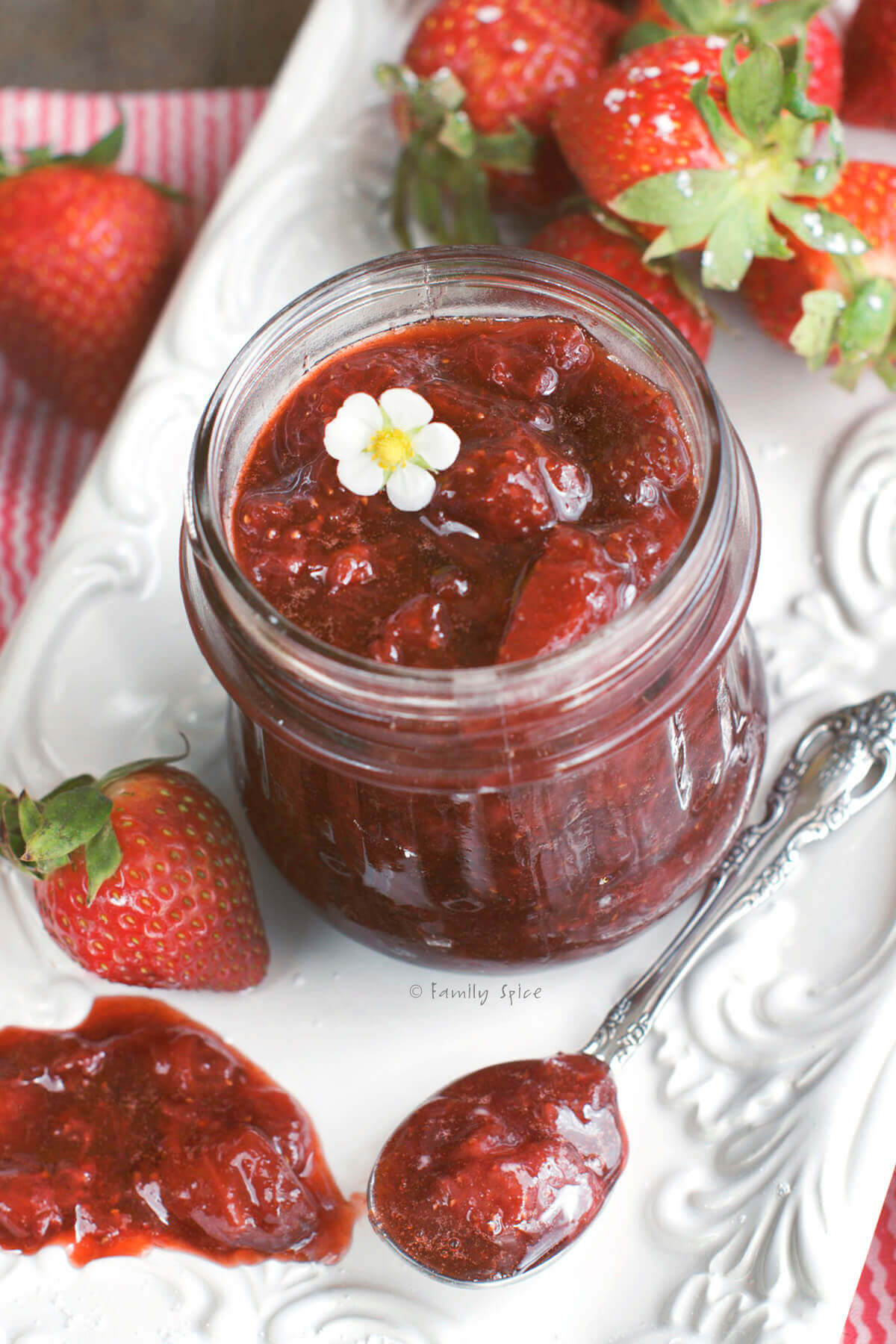
I am super giddy for the beginning of strawberry season. When I find deliciously sweet strawberries at the market, I stock up. And they don’t last long in my house. My kids love fresh fruit, and a bowl full of sweet strawberries is always a welcome dessert.
Every time I find some sweet strawberries, I’m reminded of my strawberry farm tour in Oxnard, CA. I’m so glad summer is around the corner. Summer fruits also mean it’s time to jam! And these fabulous strawberries were begging to be made into a jam.
Why this recipe is so awesome
Traveling around and talking about olive oil after publishing my olive oil cookbook has been crazy fun, taking me all over California and beyond. And I met the wonderful folks from Montello Fine Foods on one of these occasions.
After our Sonoma trip, I received some extra virgin olive oil and balsamic vinegar to sample. Not only is their olive oil smooth, but I instantly fell in love with their balsamic vinegar. This vinegar is thick like syrup and has a lovely sweetness to it.
Balsamic vinegar is a natural compliment to fruit. It’s sweet and tangy attributes add something special to desserts. I’ve drizzled balsamic vinegar over ice cream, baked balsamic vinegar in a cherry pie, so why not add balsamic vinegar to strawberry jam?
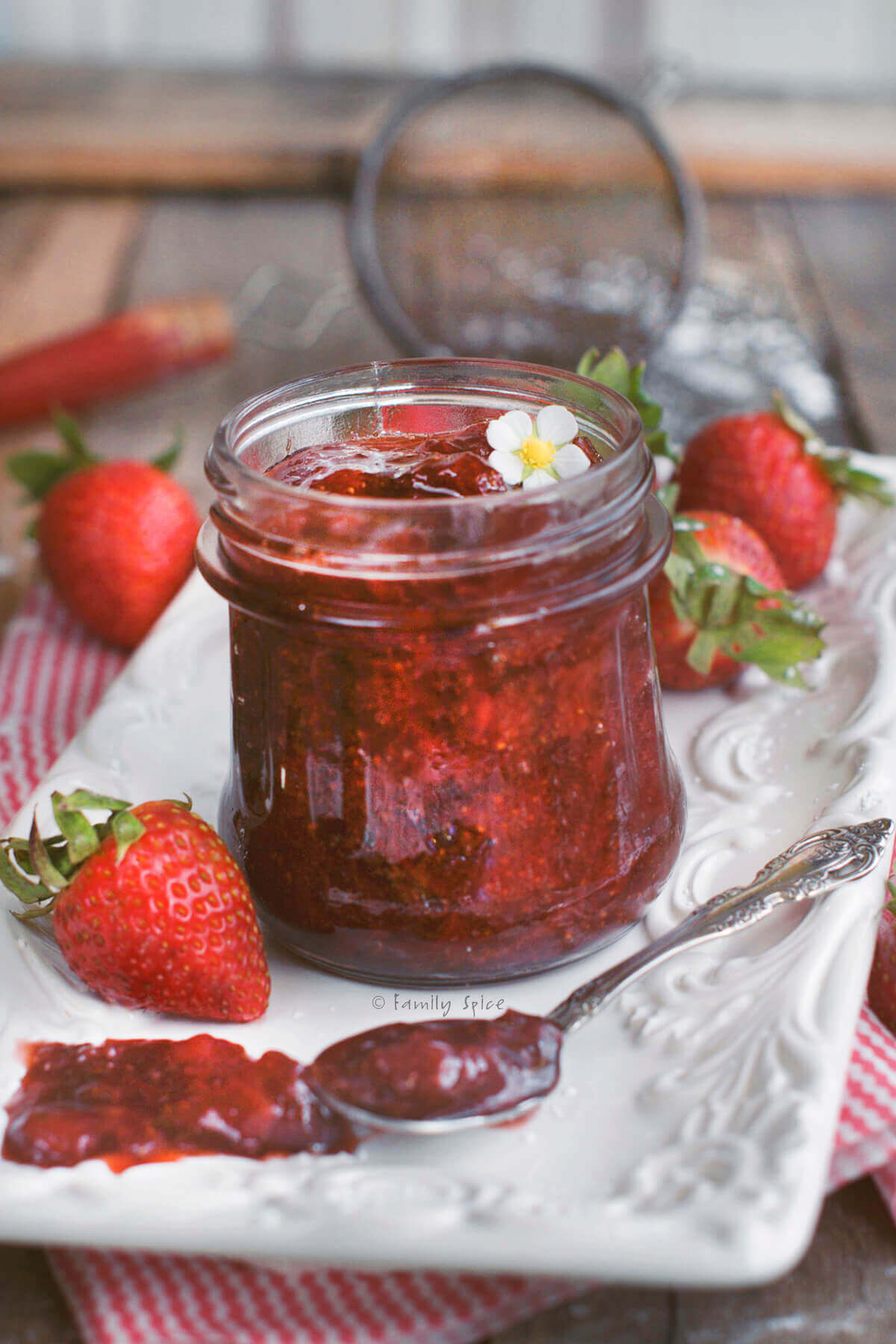
I come from a family infatuated with jam. It was my Aunt Agnes who taught me how to make jam and shared her secret to making strawberry jam. You start with a bowl full of chopped strawberries and then mix in sugar. Then you let it sit and macerate to release its natural juices.
This maceration process strengthens the berries’ natural pectin, making one fabuloso jam using the minimum amount of sugar and without pectin.
Once the strawberries were macerated, I added Montello’s balsamic vinegar and cooked them together until thick. Because the vinegar has nice sweet tones, I needed even less sugar for the jam.
Ingredients you need

This post contains some affiliate links for your convenience (which means if you make a purchase after clicking a link I will earn a small commission but it won’t cost you a penny more)! Read my full disclosure policy
- Strawberries: Fresh is always best when making jam. You want sweet and flavorful berries. You can use frozen strawberries. Just thaw and drain the juice.
- Granulated sugar: I use granulated sugar in this recipe, but I have also made jam with honey and with brown sugar. I include these adjustments in the recipe card below. I also use minimal amounts of sugar. So this makes a sweet and sour type jam. If you want it sweeter, add more sugar.
- Lemon: Both the lemon zest and juice is often used in jam making. Citrus fruits include natural pectin, which thickens the jam. No additional pectin is necessary unless your jam is watery, as it could be if you use frozen strawberries.
- Red balsamic vinegar: Choose a nice thick and flavorful vinegar. The thicker it is, the older the vinegar usually is and more syrupy. You can use regular balsamic or a number of different flavored versions that include vanilla or other fruit tones.
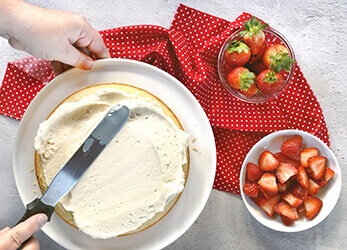
Tools to Use
Step-by-step directions
1. In a large bowl mix together strawberries, lemon juice and sugar.

2. Let strawberry mixture sit for at least 4 hours or up to overnight to macerate and release their juices.
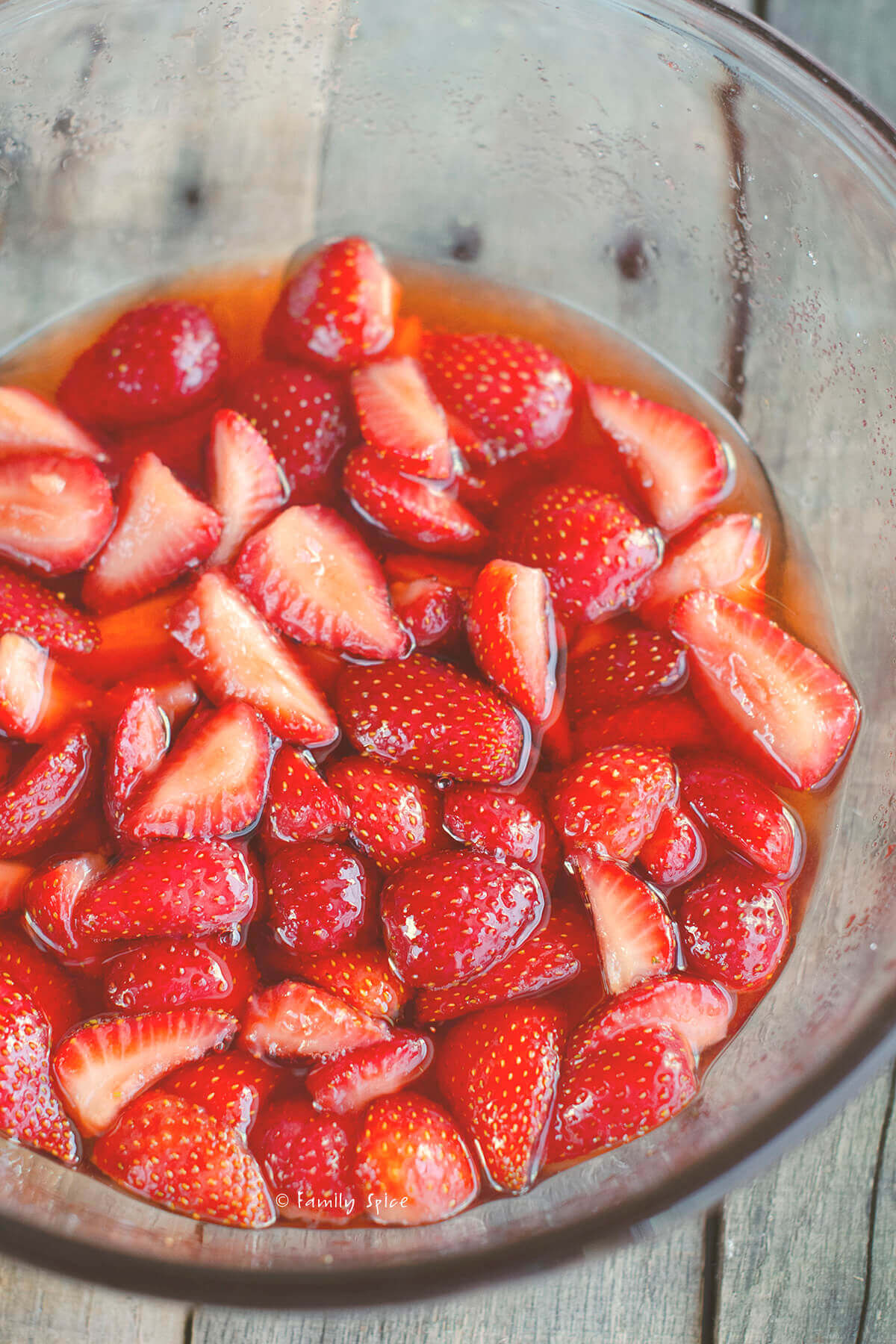
3. Transfer berry mixture to a pot and stir in balsamic vinegar. Slowly bring mixture to a boil over medium heat, stirring often to prevent sticking. Reduce temperature to medium-low if strawberry mixture is about to boil out of your pot. Cook until thickened, about 20 minutes.
If you are going to store in the refrigerator, cool until room temperature first then refrigerate. Or, if you are canning your jam, click here for hot water canning instructions.
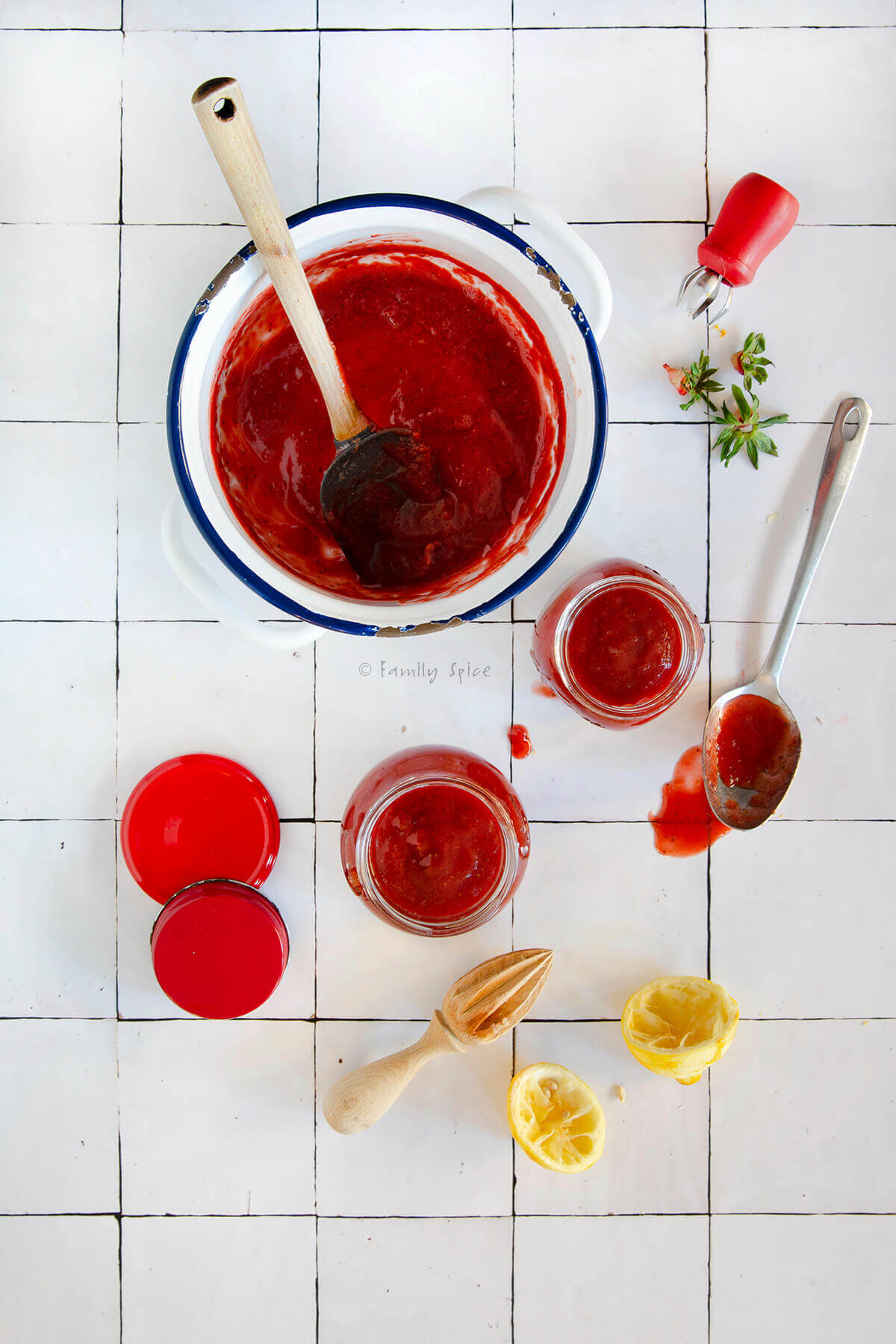
Expert tips and recipe FAQs
If you make a lot of homemade jam, then you know that adding a little lemon juice is an important component to jam making. But do you know why it is important to add lemon juice to strawberry jam, or any other jam?
It’s chemistry. The acid in the lemon juice is needed to lower the pH in your jam. Pectin comes together and thickens your jam best in a lower pH environment. Although balsamic vinegar is added to this strawberry jam, it doesn’t have a low enough pH to help the pectin thrive. Enter lemon juice.
Lower the pH of your jam is also important to prevent the growth of bacteria. And when you are canning jam, even storing it in the refrigerator for a few weeks or months, you don’t want to make people sick from your homemade gifts. Learn more about why we add lemon juice when making jam here.
The acid in the lemon juice is needed to lower the pH in your jam. Pectin comes together and thickens your jam best in a lower pH environment. Lower the pH of your jam is also important to prevent the growth of bacteria. This important when you are canning jam, even storing it in the refrigerator for a few weeks or months, as you don’t want to get people sick.
Whether you are making peach jam or strawberry jam, mix your chopped fruit start with sugar and let it sit and macerate to release its natural juices.
This maceration process strengthens the fruit’s natural pectin, making a delicious jam using the minimum amount of sugar and not needing to add additional pectin.

If you are enjoying my recipes, please sign up for my newsletter and get my free 28-day meal plan! You can also follow me on Instagram or Facebook.
Strawberry Jam (Strawberry Preserves) with Balsamic Vinegar
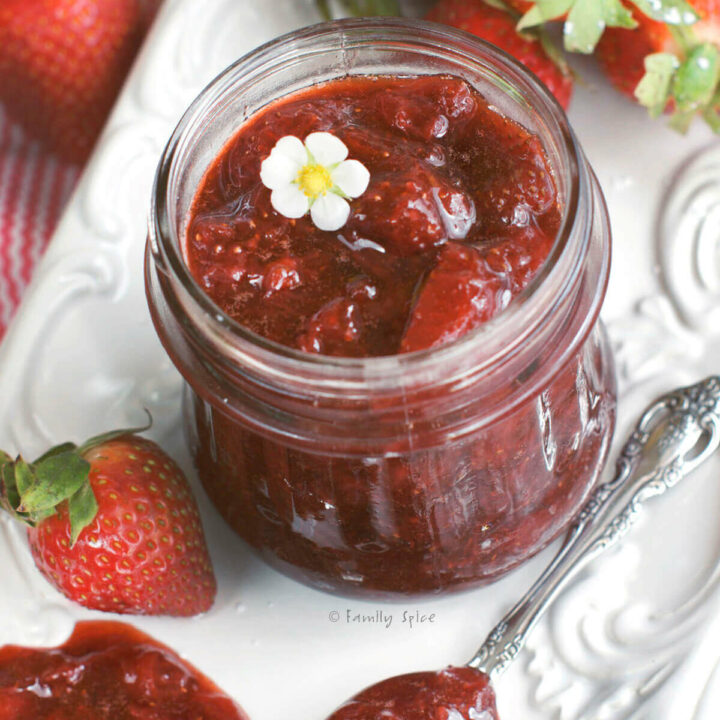
The use of balsamic vinegar makes this strawberry jam, or strawberry preserves, a cut above the other jams. Use it to top your toast or drizzle in your yogurt, oatmeal or ice cream.
Ingredients
- 1 lb strawberries, hulled and coarsely chopped
- ⅔ cup granulated sugar
- 2 teaspoon lemon juice
- 1 TBS red balsamic vinegar
Instructions
- In a large bowl mix together strawberries, lemon juice and sugar.
- Let strawberry mixture sit for at least 4 hours or up to overnight to macerate and release their juices.
- Transfer berry mixture to a pot and stir in balsamic vinegar.
- Slowly bring mixture to a boil over medium heat, stirring often to prevent sticking.
- Reduce temperature to medium-low if strawberry mixture is about to boil out of your pot. Cook until thickened, about 20 minutes.
- If you are going to store in the refrigerator, cool until room temperature first then refrigerate. Or, if you are canning your jam, click here for hot water canning instructions.
Notes
Serving Suggestions: Use on your morning toast or drizzle in your yogurt, oatmeal or ice cream.
Cooking Tips: The quality of balsamic vinegar you use will affect the flavor of your jam. This recipe uses a high quality, thick balsamic vinegar.
Nutrition Information:
Yield:
24Serving Size:
1 TBSAmount Per Serving: Calories: 28Total Fat: 0gSaturated Fat: 0gTrans Fat: 0gUnsaturated Fat: 0gCholesterol: 0mgSodium: 1mgCarbohydrates: 7gFiber: 0gSugar: 7gProtein: 0g
PS If you try this recipe, why not leave a star rating in the recipe card right below and/or a review in the comment section further down the page? I always appreciate your feedback.
You can also follow me on Pinterest, Facebook or Instagram. Sign up for my eMail list, too!


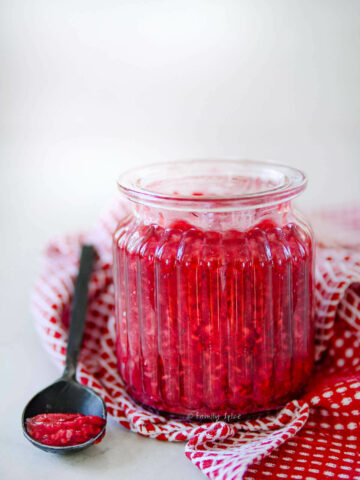

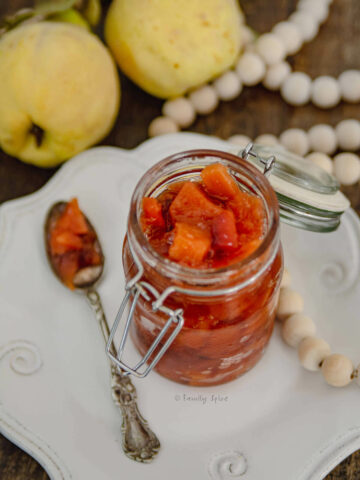
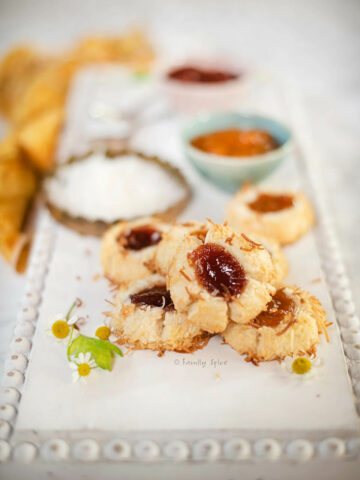
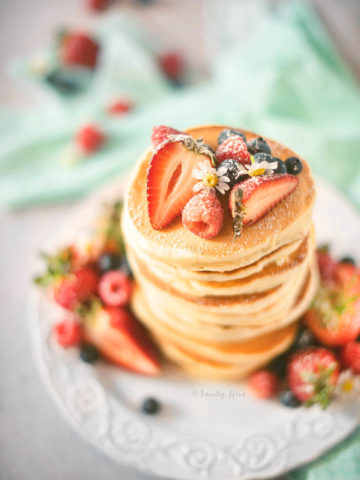
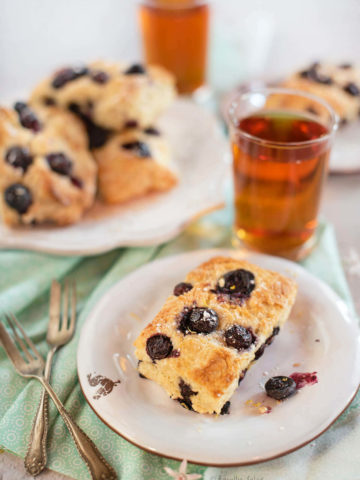
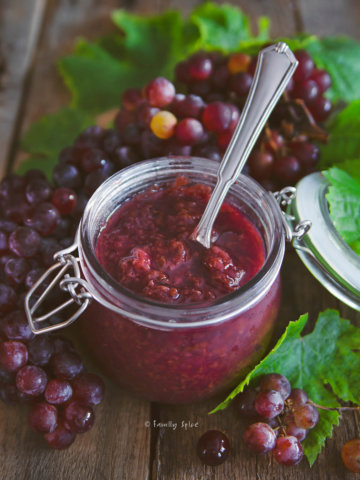

Can this recipe be doubled or tripled?
Hi Dayna-
Yes, you can double, triple, halve or whatever the recipe. I do it all the time!
Laura
Your jam looks so good…I love making jams, especially strawberry jam…I have to admit I’m not too sure about balsamic vinegar in strawberry jam, but I’ll have to try it…thanks for the maceration tip
I put it on popcorn!
Shared on twitter!: https://twitter.com/fairyburger/status/594349739669364736
This looks all sorts of amazing! I’d use it on salad first!
I love balsamic vinegar with curry powder as a dressing!
I love to roast vegetables – especially asparagus – in balsamic vinegar and olive oil!